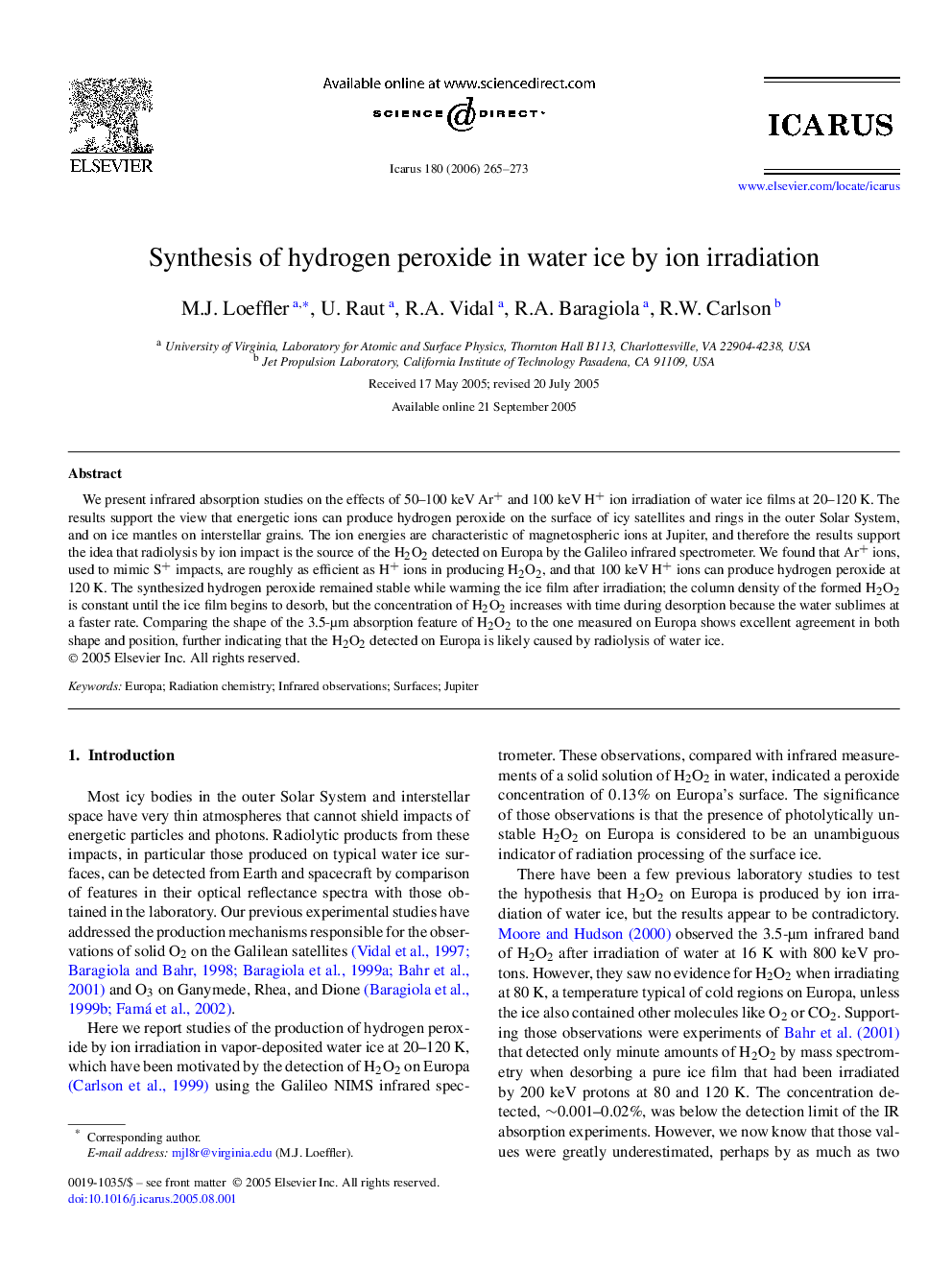| Article ID | Journal | Published Year | Pages | File Type |
|---|---|---|---|---|
| 1776035 | Icarus | 2006 | 9 Pages |
We present infrared absorption studies on the effects of 50–100 keV Ar+ and 100 keV H+ ion irradiation of water ice films at 20–120 K. The results support the view that energetic ions can produce hydrogen peroxide on the surface of icy satellites and rings in the outer Solar System, and on ice mantles on interstellar grains. The ion energies are characteristic of magnetospheric ions at Jupiter, and therefore the results support the idea that radiolysis by ion impact is the source of the H2O2 detected on Europa by the Galileo infrared spectrometer. We found that Ar+ ions, used to mimic S+ impacts, are roughly as efficient as H+ ions in producing H2O2, and that 100 keV H+ ions can produce hydrogen peroxide at 120 K. The synthesized hydrogen peroxide remained stable while warming the ice film after irradiation; the column density of the formed H2O2 is constant until the ice film begins to desorb, but the concentration of H2O2 increases with time during desorption because the water sublimes at a faster rate. Comparing the shape of the 3.5-μm absorption feature of H2O2 to the one measured on Europa shows excellent agreement in both shape and position, further indicating that the H2O2 detected on Europa is likely caused by radiolysis of water ice.
